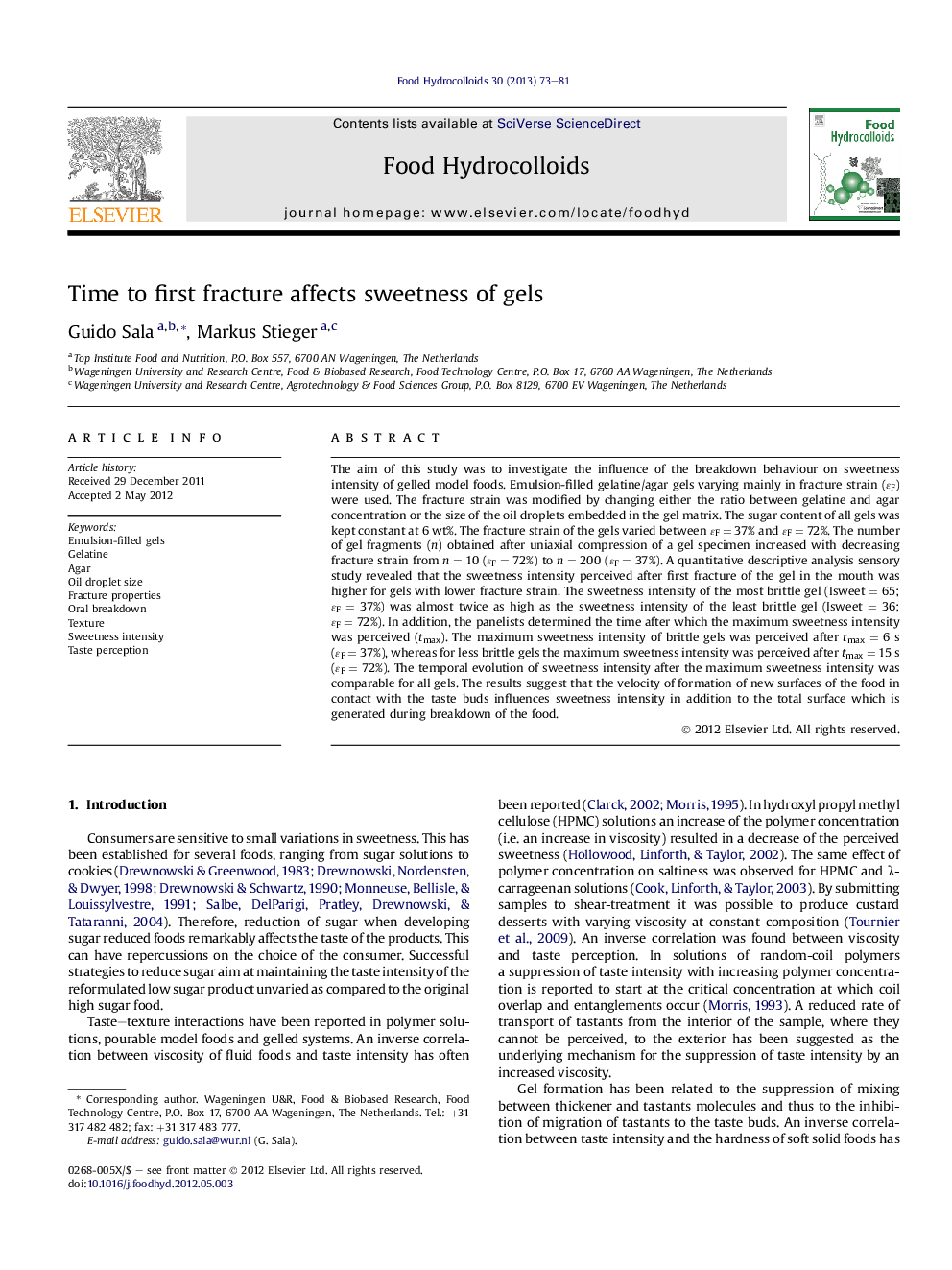| Article ID | Journal | Published Year | Pages | File Type |
|---|---|---|---|---|
| 604727 | Food Hydrocolloids | 2013 | 9 Pages |
The aim of this study was to investigate the influence of the breakdown behaviour on sweetness intensity of gelled model foods. Emulsion-filled gelatine/agar gels varying mainly in fracture strain (εF) were used. The fracture strain was modified by changing either the ratio between gelatine and agar concentration or the size of the oil droplets embedded in the gel matrix. The sugar content of all gels was kept constant at 6 wt%. The fracture strain of the gels varied between εF = 37% and εF = 72%. The number of gel fragments (n) obtained after uniaxial compression of a gel specimen increased with decreasing fracture strain from n = 10 (εF = 72%) to n = 200 (εF = 37%). A quantitative descriptive analysis sensory study revealed that the sweetness intensity perceived after first fracture of the gel in the mouth was higher for gels with lower fracture strain. The sweetness intensity of the most brittle gel (Isweet = 65; εF = 37%) was almost twice as high as the sweetness intensity of the least brittle gel (Isweet = 36; εF = 72%). In addition, the panelists determined the time after which the maximum sweetness intensity was perceived (tmax). The maximum sweetness intensity of brittle gels was perceived after tmax = 6 s (εF = 37%), whereas for less brittle gels the maximum sweetness intensity was perceived after tmax = 15 s (εF = 72%). The temporal evolution of sweetness intensity after the maximum sweetness intensity was comparable for all gels. The results suggest that the velocity of formation of new surfaces of the food in contact with the taste buds influences sweetness intensity in addition to the total surface which is generated during breakdown of the food.
Graphical abstractWhen sweetness was rated immediately after perceiving the taste, an increase of the scores was observed with decreasing time to first fracture. When the attribute sweetness was rated after perceiving the maximum taste intensity, no differences were observed between gels with different time to first fracture.Figure optionsDownload full-size imageDownload as PowerPoint slide
